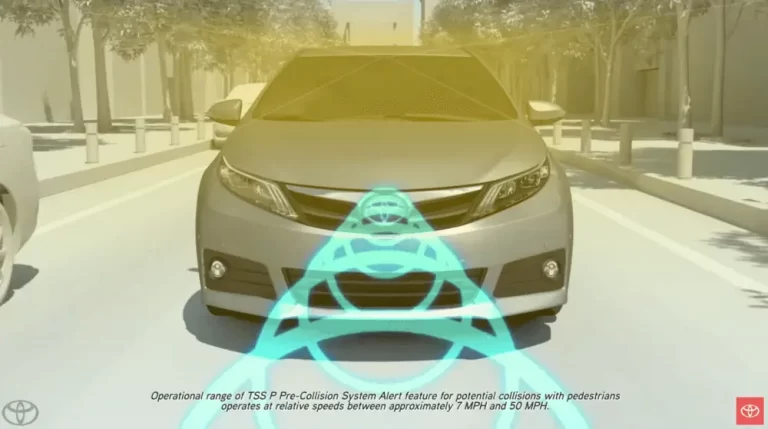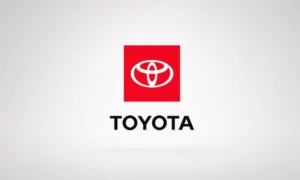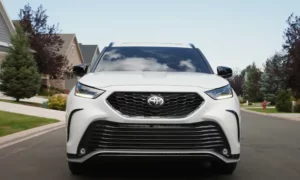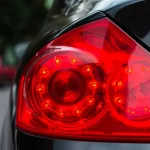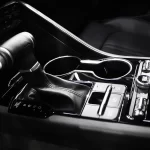Is your Toyota displaying a frustrating “Pre-Collision System Malfunction” message? You’re seeing firsthand how even the most reliable vehicles can experience hiccups with their advanced safety systems. This comprehensive guide will walk you through everything you need to know about this common issue—from why it happens to what you can do about it.
What Is the Toyota Pre-Collision System?
Toyota’s Pre-Collision System (PCS) is an advanced driver assistance feature designed to help prevent or reduce the severity of frontal collisions. Using radar sensors and cameras, it can:
- Detect vehicles and pedestrians ahead
- Alert you when a potential collision is detected
- Apply brake assist or automatic emergency braking when necessary
- Adjust seatbelt tension in anticipation of impact
This system is part of Toyota Safety Sense™, a suite of safety technologies included in many recent Toyota models like the RAV4, Camry, Corolla, Tacoma, and Highlander.
Common Pre-Collision System Malfunction Symptoms
Warning Messages and Dashboard Lights
When your Toyota’s pre-collision system isn’t working properly, you’ll typically see one or more of these indicators:
- “Pre-Collision System Malfunction” message on your dashboard display
- “Visit Dealer” notification
- A yellow warning icon showing a car with exclamation marks
- Multiple system warnings appearing simultaneously
These alerts signal that the system has deactivated itself as a safety measure, leaving your vehicle without this particular protection feature.
Linked System Failures
What many drivers don’t realize is that a pre-collision system malfunction affects more than just collision prevention. When the PCS fails, you’ll often notice:
- Cruise control becomes unavailable or deactivates automatically
- Adaptive cruise control won’t engage
- Lane-keeping assistance may become unreliable
- Other Toyota Safety Sense features might be compromised
Inconsistent Performance
Perhaps most frustrating is the unpredictable nature of these malfunctions. Many Toyota owners experience:
- Errors that appear and disappear without clear patterns
- Malfunctions that seem tied to specific times of day
- Systems that work perfectly after a restart, only to fail again minutes later
- Problems that mysteriously resolve themselves, then return days later
What Causes Toyota Pre-Collision System Malfunctions?
Environmental Triggers
Surprisingly, many pre-collision system failures stem from environmental factors rather than mechanical problems:
| Environmental Factor | How It Affects the System |
|---|---|
| Direct sunlight/glare | Blinds sensors and cameras, particularly at sunrise/sunset |
| Heavy rain or snow | Obscures sensors and reduces detection capability |
| Fog or mist | Interferes with radar and camera detection range |
| Temperature extremes | Can affect electronic components and connections |
| Road salt and spray | Creates residue on sensors that blocks proper operation |
Multiple Toyota owners have reported that their system malfunctions are more likely to occur at specific times of day, especially early morning or evening when sun position creates glare issues for the sensors.
A 2024 RAV4 Prime owner specifically noted that their error messages would consistently appear at night and early morning but disappear by lunchtime—strongly suggesting lighting conditions were the culprit.
Sensor and Hardware Issues
Physical problems with the system components are another major cause of malfunctions:
- Obstructed sensors: Dirt, bugs, snow, or debris covering the front radar sensor (typically behind the Toyota emblem) or the camera (usually near the rearview mirror)
- Misalignment: After a minor collision or even hitting a large pothole, sensors can become misaligned
- Wiring problems: Damaged, corroded, or disconnected wires (sometimes from rodent damage to Toyota’s soy-based wire insulation)
- Component failure: Electronic failures in the radar, camera, or control modules
- Calibration issues: Sensors that have lost their proper calibration settings
These hardware issues can occur gradually over time or suddenly after a specific incident like a bumper impact or windshield replacement.
System Interactions and Hidden Causes
Some of the most perplexing pre-collision system malfunctions actually stem from seemingly unrelated issues:
- Engine or emission problems: A Tundra owner discovered that an engine misfire code was causing their pre-collision system to malfunction
- Recent modifications: Vehicle lifts, suspension changes, or aftermarket accessories can disrupt calibration
- Battery voltage issues: Low battery voltage or recent battery disconnection can affect system performance
- Software glitches: Occasionally, the vehicle’s computer system simply needs a reset
- Even a loose gas cap: In rare cases, something as simple as a loose fuel cap can trigger multiple system warnings
These unexpected interactions highlight how deeply integrated modern vehicle systems have become.
DIY Troubleshooting Before Heading to the Dealer
Quick Fixes to Try First
Before scheduling a dealership appointment, try these simple solutions that have worked for many Toyota owners:
- Power cycle the vehicle: Turn off the engine completely, wait 30 seconds, then restart. This simple reboot resolves many temporary glitches.
- Clean the sensors: Wipe the front Toyota emblem (where the radar sensor is located) and ensure the windshield is clean in front of the camera near the rearview mirror.
- Check for obstructions: Look for any debris, ice, snow, or mud that might be blocking sensors. Pay special attention to the front grille area.
- Wait for environmental changes: If the malfunction appears during heavy rain or bright sunlight, sometimes waiting for conditions to improve resolves the issue naturally.
- Drive straight on an open road: Some Toyota models can perform a “zero point relearn” procedure by driving straight at speeds above 25mph for about 100 meters.
Deeper Diagnostics You Can Perform
For more persistent issues, these intermediate steps might help:
- Use an OBD-II scanner: Basic code readers can identify error codes that might reveal underlying issues. Look for any codes related to the pre-collision system or other systems that might be affecting it.
- Check your battery: Low voltage can cause electronic malfunctions. Have your battery tested if you suspect it might be weakening.
- Inspect for damaged wiring: Look for any visible signs of wire damage, particularly if you’ve had rodent problems or recent work done on the vehicle.
- Document the pattern: Keep a log of exactly when the malfunction occurs, noting weather conditions, time of day, and driving circumstances. This information will be invaluable to technicians.
One RAV4 owner’s advice is particularly useful: if you’re planning to visit a dealer, try to go while the error is actively showing rather than clearing it first. This gives technicians a better chance of diagnosing the root cause.
When to Seek Professional Help
Warning Signs That Require Dealer Attention
While many pre-collision system malfunctions can be resolved with simple fixes, these situations call for professional assistance:
- Persistent errors that don’t clear with restarts or cleaning
- Multiple Toyota Safety Sense systems failing simultaneously
- Warning messages accompanied by unusual vehicle behavior
- Recent front-end collision or damage near sensor locations
- Error messages that return immediately after being cleared
- False triggering of emergency braking with no obstacles present
What to Expect at the Dealership
When you visit a Toyota dealer for pre-collision system issues, they typically follow these steps:
- Connect specialized diagnostic tools: Dealers use Toyota’s proprietary Global Technical Stream (GTS) diagnostic system, which provides more detailed information than consumer-grade code readers.
- Access system telemetry data: For newer models, technicians can download data about what the system was detecting when it malfunctioned.
- Perform visual inspections: Checking sensors, wiring, and surrounding components for damage or misalignment.
- Test drive to reproduce the issue: Technicians may need to experience the malfunction firsthand to properly diagnose it.
- Update software: Many issues can be resolved with the latest software updates from Toyota.
- Component testing: If necessary, they’ll test individual sensors and modules.
- Calibration procedures: After repairs, precise recalibration is essential for proper system function.
Be prepared for potentially significant costs if you’re outside warranty. Sensor replacement and calibration alone can cost around $500, while more extensive repairs involving multiple components can reach $5,000 or more.
Preventing Future Pre-Collision System Problems
Regular Maintenance Practices
Adopt these habits to keep your Toyota’s pre-collision system functioning properly:
- Keep sensors clean: Regularly clean the front emblem area and windshield, especially after driving in poor weather or on dirty roads.
- Avoid aftermarket modifications: Be cautious with front-end accessories, window tints, or lift kits that might interfere with sensors.
- Address check engine lights promptly: As we’ve seen, other vehicle systems can affect pre-collision functionality.
- Use Toyota-approved repair shops: For any front-end work, ensure technicians understand the need for proper sensor calibration.
- Regular system checks: During routine maintenance, ask your technician to verify all safety systems are functioning correctly.
Understanding System Limitations
Even perfectly functioning pre-collision systems have inherent limitations that all Toyota owners should understand:
- The system may be less effective in low light, heavy precipitation, or fog
- Very small objects or pedestrians partially blocked by other objects may not be detected
- Extremely hot or cold temperatures can affect sensor performance
- Sudden movements by other vehicles may not allow enough reaction time
- The system is designed to assist, not replace, attentive driving
Toyota’s own manuals acknowledge these limitations, which is why maintaining awareness and not relying exclusively on these systems is essential for safety.
The Future of Toyota’s Safety Systems
Toyota continues to evolve their safety technology with each new model year. Recent developments include:
- Improved sensor technology with better environmental tolerance
- More sophisticated detection algorithms to reduce false positives
- Expanded detection capabilities for cyclists and pedestrians
- Integration with Toyota’s Safety Connect® emergency response system
- Over-the-air update capability in newer models
For owners experiencing persistent issues, it’s worth noting that Toyota has issued several recalls for pre-collision system problems in specific models. The 2019 C-HR recall for inoperative pre-collision sensors is one example where Toyota acknowledged and addressed a systemic issue.
When Your Pre-Collision System Just Won’t Cooperate
For those dealing with stubborn pre-collision system problems despite multiple repair attempts, consider these options:
- Request a different technician: Sometimes a fresh perspective can identify overlooked issues.
- Contact Toyota Customer Service: File a case directly with Toyota’s customer support at 1-800-331-4331.
- Document everything: Keep detailed records of all errors, repair attempts, and dealer visits.
- Research potential recalls: Check if your specific model and year has any pending safety recalls or technical service bulletins.
- Consider lemon law provisions: For new vehicles with persistent, unresolvable safety issues, state lemon laws may provide recourse.
Remember that the pre-collision system is an important safety feature, but your vehicle remains drivable even when this system is temporarily disabled. The most critical safety features—like standard brakes, airbags, and seatbelts—continue to function normally.
By understanding the causes and solutions for Toyota pre-collision system malfunctions, you’ll be better equipped to address these frustrating but usually resolvable issues. Whether it’s a simple sensor cleaning or a more complex electronic repair, restoring this important safety feature is worth the effort for your peace of mind on the road.

